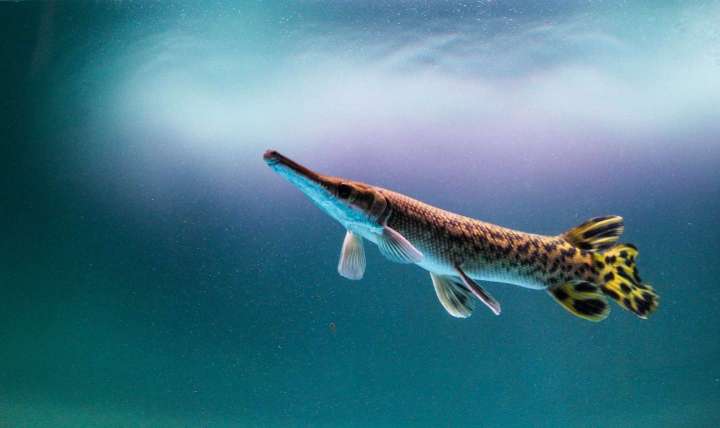A furtive “monster” fish caught national attention in China this week as millions of people tuned in to a multiday effort to capture it.
‘Monster’ fish eludes capture as Chinese city drains lake, millions watch

The “monster” busters faced a challenge: They had to first locate the fish in Yunchan Lake, a 30-acre artificial body of water rife with aquatic plants near the bottom. After two weeks searching in vain, the local government announced it would drain the entire lake.
As the draining neared an end Tuesday, media outlets and Chinese TikTok influencers swarmed to the site for a glimpse of the fish. A live stream by the state-run tabloid Chutian Metropolis Daily attracted more than 37 million viewers, as the hunting team set up searchlights and combed remaining puddles with fishing nets.
【河南汝州一公园抽湖水捕“怪鱼”:抽水20多天 鱼躲进了涵洞】8月24日,河南汝州云禅湖水已基本抽干,确认“怪鱼”在涵洞内。7月中旬,有市民在公园散步时,发现巨型鱼,随后上报公园管理方。园方称怪鱼或系人为放生鳄雀鳝,是一种来自南美的高危外来水生生物。 pic.twitter.com/oScmFosGmc
— 新京报Beijing News (@BJNewsOfficial) August 25, 2022
“I am starting [a] fire to cook it,” said one commenter on the live stream. Others brainstormed ideas for the search team, with one person proposing the use of Go-Pro-equipped remote-control cars and others suggesting luring it out with a laser pointer.
By the time the search team called it a day late Tuesday, there was still no sight of the fish.
The live-streaming marathon continued Wednesday and Thursday, with gar-related hashtags trending on the Weibo microblogging service. Government officials told local media that the gar could be hiding in an approximately 200-yard-long U-shaped pipeline leading to the lake.
Alligator gars, native to the Americas, were introduced to China as pet fish. They were prized for their quirky look, but many were later abandoned or released into the wild after growing too big. Despite Chinese scientists lobbying for the gar to be added to an inventory of invasive species, it remains readily available in pet stores and on e-commerce sites for as little as a few dollars.
The fish poses a threat to local ecosystems because of its voracious appetite, experts say. It also has few natural predators.
In the United States, where the alligator gar population appears to be in decline, transport and trade of the fish is regulated by federal law. In Washington state, the unauthorized release of an alligator gar into state waters can be charged as a felony.
“When a gar gets released into a river, lake or fish farm here, it will start to devour everything, which can be a great threat to local ecosystems,” said Gu Dangen, an aquatic ecosystems expert at the Pearl River Fisheries Research Institute, who has studied invasive fish species.
The gar can grow up to 10 feet and prefers sluggish bodies of water such as the artificial lake in Ruzhou, he said. The fish may attack humans if it feels threatened, though such incidents are “extremely rare,” Gu added.
A 27-inch, 11-pound gar was caught in an eastern Chinese city last week after a boy was bitten, according to a television network in Jiangsu province.
Members of the search team said Thursday afternoon that they would enter the large water pipe to hunt the gar. But some online commenters started speculating about whether it was worth draining the lake for one fish.
“With all this fanfare, one would think this was about catching the Loch Ness Monster,” one user commented on Weibo.
Gu said local officials meant well but may have overreacted.
“Economically, of course, it’s not worth it. Are we going to drain every lake when we spot gars there?” he said.
correction
The alligator gar caught in eastern China last week weighed roughly 11 pounds. An earlier version of this article incorrectly stated that it weighed 22 pounds. The article has been corrected.






